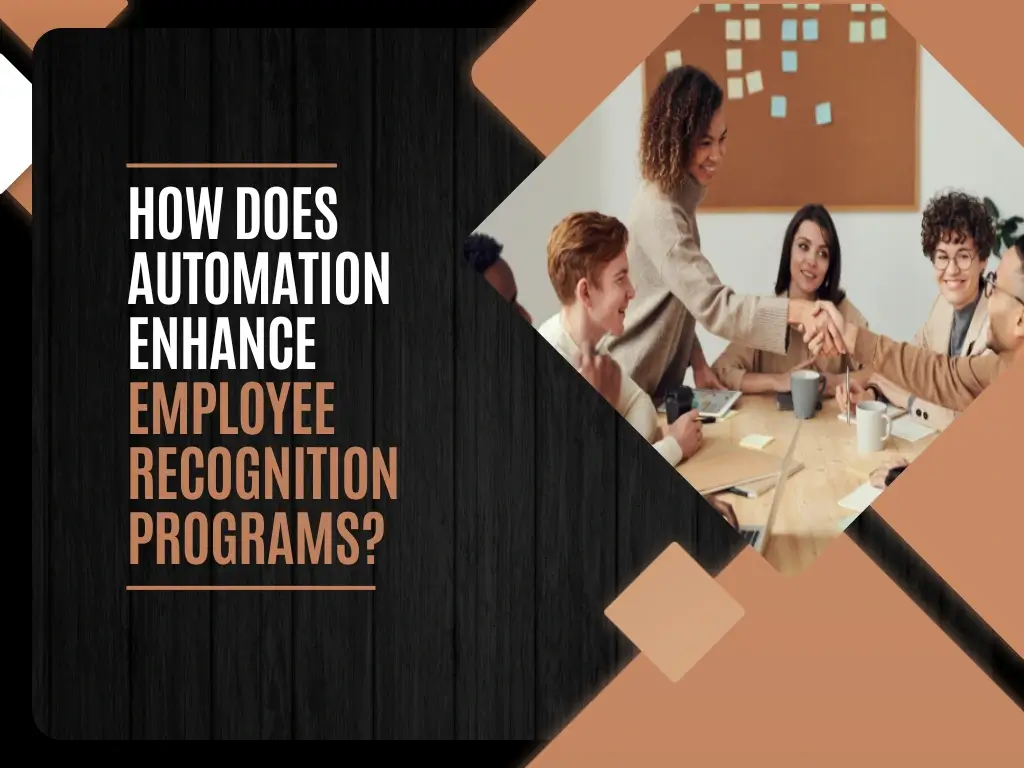How Does Automation Enhance Employee Recognition Programs?
Do you want to enhance your employee recognition programs? Automation tools for things like personalized messages, awards, and gifts could be the answer.

Employee recognition programs spotlight contributions within a team. They play a key role in enhancing morale and boosting workplace satisfaction. By acknowledging efforts, these programs lead to increased productivity and engagement, helping companies to retain valuable talent.
In today’s fast-paced environment, automation can significantly enhance employee recognition programs…
Elements of Employee Recognition Programs
Employee recognition programs should fit the company culture and align with employee preferences.
Here are some effective ways to recognize employees:
- Public Acknowledgements. Shout-outs during meetings or on internal platforms.
- Monetary Rewards. Bonuses or gift cards for outstanding performance.
- Celebratory Gifts or Awards. Work anniversary gifts for employees help mark milestones and show appreciation for their loyalty.
- Professional Development Opportunities. Offering courses or conferences as a reward enhances skills while recognizing efforts.
- Flexible Scheduling Options. Allowing remote work days or adjusted hours in recognition of hard work can boost morale.
Such strategies are sure to enhance job satisfaction and motivation.
Now, let’s look at how automation can enhance employee recognition programs.
Personalized Messages Can Be Automated for Timely Recognition
Automation helps send personalized messages quickly.
Imagine: an employee achieves a milestone, like completing a big project or hitting sales targets. With automated systems, you can instantly send them a custom congratulatory email or message.
These timely acknowledgments make employees feel valued right away. Automation tools also allow managers to schedule messages in advance for birthdays and work anniversaries.
Such personal touches elevate recognition programs by making appreciation both consistent and meaningful without consuming excessive time or resources.
AI Can Be Leveraged to Identify Key Moments of Achievement
AI technology identifies significant employee achievements with precision. It analyzes performance data, recognizing patterns that highlight exceptional contributions.
Imagine an AI tool tracking sales figures or project milestones, for example. When someone surpasses a benchmark, the system triggers a notification to management for recognition. This ensures no accomplishment goes unnoticed.
By identifying these key moments automatically, companies can acknowledge employees promptly and accurately, strengthening motivation and morale across the organization without relying solely on managerial oversight.
Reward Distribution Can Be Streamlined with Technology
Automation can streamline the distribution of rewards in recognition programs. Using digital platforms, companies can quickly allocate bonuses, gift cards, or other incentives.
Consider an automated system that processes achievements and directly deposits a reward into an employee’s account or sends a digital voucher. This process reduces administrative burden and speeds up acknowledgment.
Instant delivery ensures employees feel appreciated without delay. By making reward distribution efficient and seamless, technology enhances the effectiveness of recognition initiatives across organizations.
Social Recognition on Internal Networks Can Be Enhanced with Automation
With automation, social recognition can be elevated within company networks. It enables the automatic sharing of achievements and milestones across platforms like Slack or Microsoft Teams.
Picture a system that detects when an employee meets SEO key performance indicators and posts a congratulatory message to relevant channels. This fosters a culture of acknowledgment, encouraging peer-to-peer appreciation.
By automating these interactions, companies create an environment where positive reinforcement thrives organically, enhancing team spirit and collective morale with minimal manual effort from management.
Real-Time Analytics Can Measure Program Effectiveness Thanks to Automation
Automation can leverage real-time analytics for evaluating recognition programs. Data dashboards can offer insights into things like employee engagement, participation rates, and reward impact.
Imagine accessing metrics that reveal which initiatives boost morale the most or pinpoint areas needing improvement. These insights guide strategic adjustments, ensuring programs stay relevant and effective.
Continuous monitoring helps organizations refine their approaches to recognition. By understanding what’s working in real time, companies can make informed decisions that align with employee needs and drive overall productivity growth.
Recognition Can Be Achieved by Harnessing Emerging Tech
Lastly, cutting-edge technology reshapes how we recognize employees.
Automation integrates seamlessly with emerging tools, such as the following, to craft unique recognition experiences:
- Augmented Reality Celebrations. Use AR for virtual parties, allowing remote colleagues to join and celebrate achievements in an immersive way.
- Virtual Badges and Trophies. Digital badges offer visible accomplishments on professional profiles, encouraging pride and motivation.
By automating these innovative methods, companies can creatively enhance employee engagement while maintaining efficiency. This approach offers a fresh take on traditional recognition practices in the workplace.
The Takeaway
Incorporating automation into employee recognition programs revolutionizes how achievements get acknowledged.
Automated personalized messages and AI-driven insights ensure no milestone goes unnoticed, offering timely appreciation that boosts morale. And technologies can streamline reward distribution, making the process efficient and seamless.
By leveraging emerging tools like augmented reality and digital badges, companies can engage employees in innovative ways that align with modern expectations. Plus, real-time analytics enable continuous improvement of these programs by revealing effective strategies.
Embracing such advancements empowers organizations to foster a culture of recognition that’s dynamic and responsive, driving productivity while enhancing overall workplace satisfaction for everyone involved.



